
Order now
The Authors of:
THE FUTURE
OF BUSINESS
§
William Halal
Kevin Wheeler
Alexandra Whittington
Hardin Tibbs
Yates Buckley
Ian Pearson
Steve Wells
Anne Lise Kjaer
Boyan Ivantchev
Joyce Gioia
Calum Chace
Amir Bar
Omar Mohout
Rishi Haldanya
Matt Alder
Gerd Leonhard
Michael Nuscke
Jeffrey Joslin
Elias Rut
Martin Dinov
Andrew Charlton
Stephen
Aguilar-Millan
David Saintloth
Gray Scott
B.J. Murphy
Devin Daniels
Jim Burke
Claire A. Nelson
Andrew Vladimirov
Vinay Gupta
Benjamin Mottram
Sohail Inayatullah
Cornelia Daheim
Dean Bubley
Anish Mohammed
Stephen Roulac
Rohit Talwar
Victor V. Motti
Francisco Jose Martinez Lopez
Petur Albert Haraldsson
Maree Conway
Paul Brooks
Alberto Rizzoli
Julian Snape
David Wortley
Michael Mascioni
James H. Lee
Peter Cochrane
Anne Boysen
April Koury
Norman Rebin
Tiana Sinclair
David Wood
Dana Klisanin
Laura Goodrich
Puruesh Chaudhary
Peter Bishop
Adrian Pop
Anna Simpson





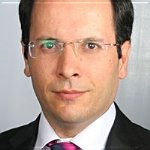
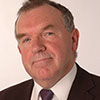
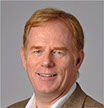




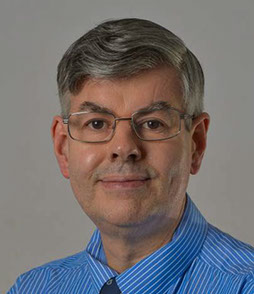




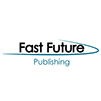
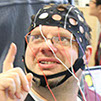



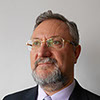

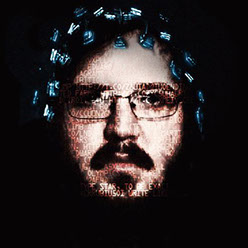
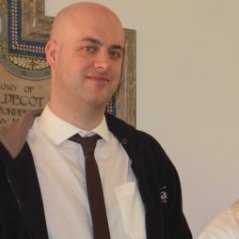
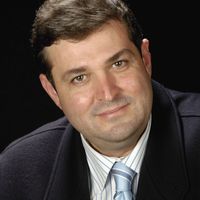
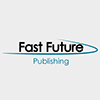
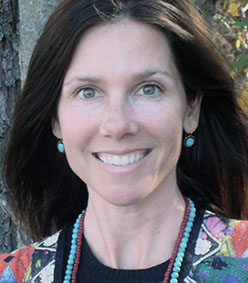



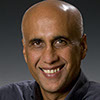
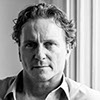



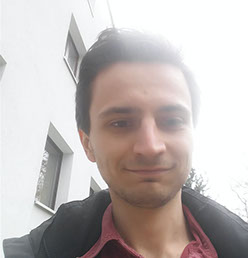
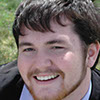

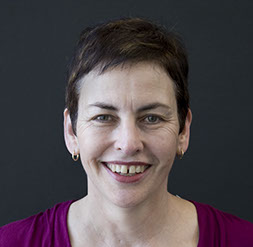



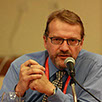

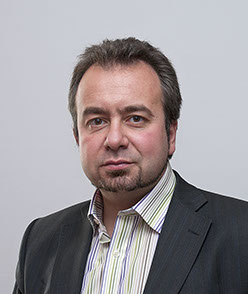


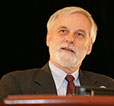
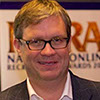

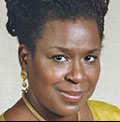
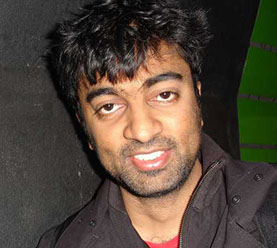


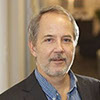

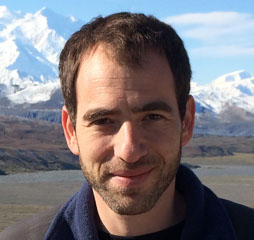

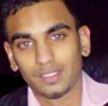
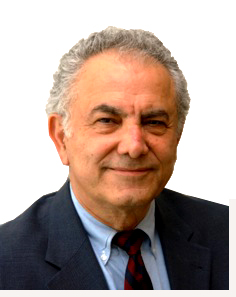 William Halal
William Halal
Prof. Emeritus at GWU, President of TechCast Global
Building a World That Works: How to Get Through the Global MegaCrisis
William Halal specializes in technology forecasting, strategic planning, knowledge, and institutional change and is a Professor Emeritus of Science, Technology, and Innovation at George Washington University, where he has worked for over 35 years.
Using an evolutionary perspective, we show how the world is likely to make the passage through today’s “Global MegaCrisis” to a mature state of development. The MegaCrisis is defined as the confluence of climate change, energy shortages, financial instability, terrorism, institutional failures, and other threats that are reaching a critical point as industrialization doubles over the next decade. Our survey results show people think there is a 60 percent probability these trends could cause major global disasters or even a collapse of civilization in large parts of the world. Results of macro-forecasts from the TechCast Project outline how the technology revolution and social trends are likely to create infinite knowledge and intelligence in about a decade, raising awareness dramatically. We conclude with general principles that could help make this transformation to a sustainable global order.
 Yates Buckley
Yates Buckley
Founder, Technical Partner - Unit9
The Future of Digital Media - The Freexpensive Prerogative
Yates Buckley is a founding partner at UNIT9, an award-winning UK digital production agency. He explores how we might use intelligent personal agents to integrate our technology ecosystem to best communicate to us, control access to our personal data and serve our needs.
Digital media has been transforming, and the substrate of communication tools has led to even quicker transformation and adoption. Over the years, the process of transformation has specialised around distance to the viewer and trying to bring the communication closer, targeted, and more entwined with the individual media consumer's life. Billboards that project version of themselves to specific target users and goggles which overlay the world’s content are part of a transformation of media, from communal distant broadcast to intimate, close, and personal relation. With this transformation, along with the fractioning of actual target platforms with every possible ratio of tablet, phablet, and tablone and a wave of new goggles, watches etc., we enter a space where we will bring media with us wherever we go, and it will be our personal broadcast. We will be feeding information to reinforce our networks, and taking our networks to the streets to win people over to our lifestyle basket. Is it inevitable that our media will be shaped by the networks we participate in? How and when will we discover the right balance between close media and shared media? Is our sharing inevitably a tunnel to a global space, or will the physical space matter again? What does it mean for some to see the world differently from others? Is implantation the end point to television? What does it mean to have a computer-brain interface to our future media?
My technique will be to try to start the article around some ground truth processes that I feel are difficult to disrupt, like assumptions in generous acceleration in bandwidth and processing, increase in population, struggle with inequality on a global scale, struggle with different knowledge globally, etc. I will then look at setting a scenario based on the kind of processes that shaped emergence of other media and look at this as waves.
 Gerd Leonhard
Gerd Leonhard
CEO - The Futures Agency
Redefining the Relationship of Man and Machine
Gerd Leonhard, a Swiss-based Futurist, Keynote Speaker, Author and CEO of The Futures Agency, sets out the case for a Digital Ethics Treaty - ensuring that - in the face exponential waves of disruption - we focus on controlling these technologies and harnessing them to serve humanity and further human happiness.
We are witnessing exponential progress in digitisation, automation, virtualisation and robotisation all around us, in all sectors of society, technology and business. “Software is eating the world” and it's getting smarter every single day. Artificial intelligence, deep learning and cognitive computing are becoming the next big memes, and many businesses don't know how to separate the hype from the likely-to-happen future. How will this play out in the next 5-8 years? What are the biggest opportunities, and what are the challenges we shouldn't ignore?
 Vinay Gupta
Vinay Gupta
Ethereum
Digital Currencies
Vinay Gupta's career has seen three distinct phases: software nerd, ecologist, and revolutionary. He is now the release manager for Etheruem, a new "trustless software platform for developing and running decentralised applications on the internet. He examines the challenge of valuing complex assets such as ecosystem services, and explores how large scale simulations could enabled us to value the impact of everything from climate change to a new business model.
Right now money is represented, for the most part, as numbers: $61.47, £22.42, €11.92. Nature is represented as 300 page reports with complex charts and graphs, and the conclusions are argued over indefinitely. What if we could make tools which have the ability to represent nature as easily as we represent value in the abstract economic game that we use to manage most of our planet's physical and (increasingly) intellectual resources?
Money that works like software is possible: bond trading and similar areas of finance can include esoteric financial instruments with extensive software support, instruments which a paper-and-pencil team could simply never trade, no matter how slowly, because of the danger of arithmetic order.
20 years from now, we will likely have a million times more computer power: could we finally build a system which models value directly rather than abstracting it out to simple numbers? Could we compute the true value of nature, and of a contract, and thereby right the world?
 Victor Vahidi Motti
Victor Vahidi Motti
Chief Foresight Advisor - Vahid Think Tank
Life in 2035: Future Consciousness, Cyborgs and Wisdom
Victor Vahidi Motti, a noted and award-winning Iranian scholar and academic futurist, explores how rapid and radical advances in science and technology could disrupt and reformulate our understanding of human capability, wisdom and the nature of work.
Whatever can be written, will be taken over by programmers and AI researchers sooner or later. In other words, if there is a manual, book, handbook, paper, or the like around on how to do something, then some software may be developed and evolved to sufficiently human-level precision and skill.
 David Wortley
David Wortley
CEO and Founder - GAETSS: Gamification and Enabling Technologies
The Impact of Wearable Lifestyle Technologies and Gamification on Business and Society
David Wortley is a Malaysia-based author and expert on the strategic use of gamification and enabling technologies for the transformation of business and society. His chapter considers the future potential impact of wearable lifestyle sensor technologies, AI, mobile applications and gaming concepts on personal and corporate health.
Wearable lifestyle technologies, which track physical activity and sleep patterns, combined with increasingly sophisticated body composition devices, which not only measure weight and body mass, but also analyse the fat and water content of the body in a simple non-obtrusive way, have the potential to tackle serious societal health issues such as obesity. This article examines the impact on society of personal health management adoption by large numbers of citizens.
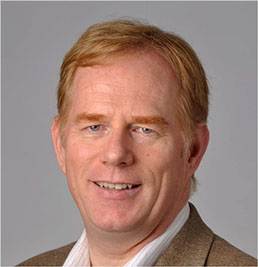 David Wood
David Wood
Principal - Delta Wisdom
The Prospect of Democracy 2.0
David Wood, a UK-based futurist, technologist, writer and chair of London Futurists, sets out the case for embracing technology to help enable the transition from democracy 1.0 to a more open, participative and informed democracy 2.0 model of governance in the digital era.
Accelerating technology is already radically transforming many areas of life, including education, entertainment, health, transport, and warfare. Technology has, in the same way, the potential to radically transform politics. It can do this by enabling improved collective decision-making, by instant fact-checking of claims made by politicians, by evaluating options in a way free from human bias, and by identifying which are the most significant points in a large sea of noisy democratic discussion. It will be like when Google gently asks us, "Did you mean to type...?", and when Google draws our attention to improved navigation routes through cities we thought we already knew well. Technology will, similarly, be suggesting innovative new policy, perhaps better than anything dreamt up by human analysts. New technology can also offer improved alternatives to archaic first-past-the-post voting systems, in which electors are unable to express their actual preferences.
But like all technology, the technologies of decision-making are capable of misuse as well as use. They could produce a horrific state of Big Brother oppression and alienation. Under the motto that “forewarned is forearmed”, this chapter provides a roadmap through the possible changes in political systems that lie ahead
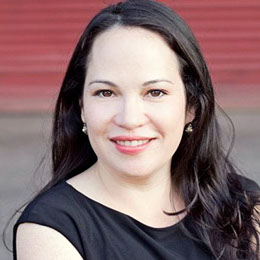 Alexandra Whittington
Alexandra Whittington
Futurist - Partners in Foresight
Social Technologies - How Will Tomorrows Technologies permeate Our Everyday Lives?
Alexandra Whittington has taught undergraduate courses about the future at the University of Houston since 2009. She has authored and co-authored articles for publications including The Futurist magazine and the journal Futures. Alexandra has a B.A. in Anthropology and M.S. in Studies of the Future.
Together with Amir Bar, she presents four scenarios exploring how mobile technology could permeate every aspect of our social and professional lives by 2030.
 Kevin Wheeler
Kevin Wheeler
Founder and President - Future of Talent Institute
The Future of Talent Management: Recruiting, Workforce Planning, Leadership Development & Performance Management
Kevin Wheeler is a US-based author, consultant, teacher and global speaker, and Founder and President of The Future of Talent Institute. Kevin highlights how the confluence of factors driving business change will force us to rethink every aspect of talent management in tomorrow's organization.
This article presents an overview of the changing nature of work and the future of the labour market. It will discuss how organisation will find, utilize and engage talent over the next decade or more. The article will discuss the evolution of workforce planning, the future of the on-demand worker versus the permanent worker, and future approaches to succession planning and human resources strategy. It will also provide some thoughts on the future competencies leaders will need, and how those competencies will be attained.
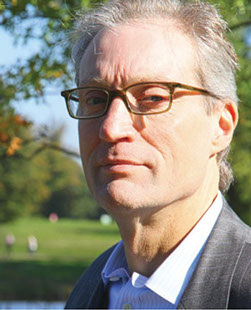 Hardin Tibbs
Hardin Tibbs
CEO, principal consultant - FutureLens
Futures Thinking - A Critical Organisational Skill
Hardin Tibbs, a highly experienced UK-based futurist, strategist, educator and writer, highlights the importance of developing the critical future thinking skills that enable an organisation to anticipate and adapt to change.
Is futures thinking just another name for futures research? A good case can be made that it is something distinct and complementary. The author’s experience starting from the early years of Global Business Network (GBN) in California suggests that a set of participatory social practices underpin successful futures research consulting projects carried out for client organizations. Futures thinking lies on a continuum with history and anthropology as a generator of interpretative narrative and understanding about society, and shares an ethnographic approach with anthropology. Futures thinking can more effectively serve a vital organisational role in enabling adaptive learning and catalysing social and cultural change if it is explicitly recognized as a social praxis. The participatory social aspects of futures thinking are at least as important as the specific futures research methodology that is used – for example, scenarios.
 Rohit Talwar
Rohit Talwar
Founder & CEO - FastFuture
Opening Chapter & Global Drivers of Change
Rohit is a global futurist, strategist and award-winning speaker noted for his humour, inspirational style and provocative content. He advises global firms, industries and governments on how to survive, thrive, spot and manage emerging risks and develop innovative growth strategies in the decade ahead.
Rohit Talwar, along with co-author April Koury, introduce over 100 global drivers of change that shape organizations today and will continue to impact the future of business.
The drivers fall into seven broad categories:
Tomorrow's global order - How might power balances shift?
Emerging societal landscape - Who are we becoming, how will we live?
New economic and political architecture - How might economic and political systems evolve?
Social technologies - How will tomorrow's technologies permeate our everyday lives?
Future of business - What are the critical success factors for organizations in a rapidly changing world?
Disruptive technology - How might new technologies enable business innovation?
Energy environment and resources - How can we protect and power the planet?
 Julian Snape
Julian Snape
Consultant - Technovation Anglia
Constructing the Future - Investigating the Future of Additive Manufacturing
Julian Snape is a UK-based adviser on the impacts of disruptive technologies for small to medium enterprises and one of the early co-founders of Transhumanism in the UK. He traces the rapid evolution of 3D printing, and examines the transformative ways in which it could impact the construction sector.
This chapter will briefly examine the current state of play in the use of additive manufacturing (3D Printing) in the construction industry, with examples from Holland, China, Spain and the UK.
Then it will look at some of the proposed convergent developments within the field, such as metal, carbon fibre and graphene printing, and speculate how these might be integrated into existing building printers to achieve rapidly printed near or fully functional living spaces. It will also look at how these processes could be commercialised.
It will then look at the socio-economic implications of the proposed technologies in terms of its impact upon the current construction industry and supply chain, as well as investigating how the dramatically increased speed of building printing could disrupt the housing market in terms of addressing housing shortages and costs.
Finally, it will look at proposals to use additive manufacture in extra-terrestrial environments to produce large structures in space, on the Moon and Mars, and it’s potential impact on the nascent private space exploration industry.
 Tiana Sinclair
Tiana Sinclair
Founder - Future Tech Track
The Future of Events and Networking
Tiana Sinclair is a UK-based product manager, futurist and an advocate of emerging technologies, and she runs the Future Tech Track event for early technology adopters. Tiana discusses how a range of advanced technology developments could be deployed to augment the live experience for attendees, event owners, sponsors and planners.
This chapter will focus on the intersection of real life interactions and emerging technologies, and provide some insight on how we will be able to enhance our experiences and boost our networking reach to engage with those who matter the most, turning 'connecting' in real world into an easier, more structured and quantified process.
As we strive towards the future, more and more mediums from the worlds of Artificial Intelligence, Augmented Reality, Robotics and Wearables will become available at our expense, which will allow more automated solutions and enormous potential for integration with our existing digital identities and social media platforms. I will look at event industry trends and explore whether it is likely that in the future, the gap between offline and online will shrink, and whether networking will turn into a two-word 'net working' - meaning quite literally, 'working the net'.
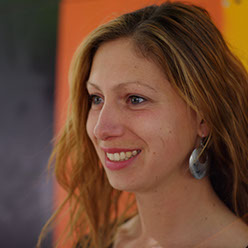 Anna Simpson
Anna Simpson
Curator - Forum for the Future
The Future of Futures Journalism
Anna Simpson, a Singapore-based author and curator of Forum for the Future's Futures Centre, examines the current crisis in the practice and institutions of journalism and news reporting, and argues the need for journalism to evolve by learning from the practices of futures and foresight research.
How can we - as writers and curators - balance dynamic, rapid information-sharing with considered reflection about the long-term implications? What examples are there of journalists looking up from immediate change to the long-term implications? How can we encourage the rise of futures journalism? I have interview futures writers such as Alex Steffen, Cameron Tonkinwise and John Sweeney.
 Gray Scott
Gray Scott
Founder, Futurist - Serious Wonder
The Automated, Digitized, and Simulated Future
Gray Scott, a New York-based futurist, techno-philosopher, speaker, writer, artist and founder and CEO of SeriousWonder.com, outlines the relentless forces that are driving the deep and transformative penetration of digital technologies into every aspect of society.
The future will be automated, decentralized, digitized and eventually, simulated. By 2035, our homes, cars, and most of our jobs will be automated. Automation will decentralize and disrupt almost every industry. Imagine a future filled with self-replicating autonomous robots that harvest raw materials from near earth asteroids. These asteroid mining robots could manufacture products directly on the asteroid and then ship the goods back to earth. It may sound like science fiction, but a company called Planetary Resources is working on making this into science fact.
Worldwide shipments of multipurpose industrial robots are forecast to exceed 207,000 units in 2015. Each of these robots can do the job of several human workers and can work 24/7 without breaks or holidays. Agricultural farm bots will grow and harvest food from urban underground vertical LED PinkFarms. These automated farms use red and blue LED lights to grow food indoors without ever seeing sunlight. Autonomous self-driving cars will become the standard form of transportation in urban areas. Automated planes, trains, and drones will deliver products directly to our doors, and home service robots will be waiting to accept the delivery for you.
Will corporations survive a decentralized automated future if everyone can harvest energy, food, and raw materials? How will humanity react to the automated future? What will we do with our lives if we no longer need to work? Without the need for work what will stop us from slipping into the digital cosmos?
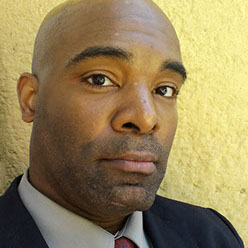 David Saintloth
David Saintloth
Chief Scientist - Apriority LLC
The Rise of the Cosmeceutical Sector
David Saintloth, a US entrepreneur, designer and writer, highlights the market potential of a new cosmeceutical health and beauty sector that could emerge as a result of recent developments in gene editing technology.
In this article I'd like to talk about the pending trillion dollar "cosmecuticals" industry. What's that? Well, we are in the process of doing what was done for computing in the mid 70's for biology, specifically for genetics and microbiology. The invention of iPSC in 2007 and the harnessing of Crispr-Cas9 in 2013 opens the door wide on what we can do with all living things to match the power that programmers have over code. The age of the GDE's (genetic development environment) is upon us, and the therapies and genetic changes we will be making to our phenotype (skin, eye, hair, etc.) will usher in a trillion dollar global industry.
I'll explain how and why business needs to be aiming their guns at this new remarkable space.
 Andrew Vladimirov
Andrew Vladimirov
Neuroscientist, Information Security Expert, Brain Hacker
The Near-Future Consequences of Linked Neural Recording and Stimulation Technologies
Andrew Vladimirov is an experienced Ukrainian neuroscientist specialising in stimulation technologies. Together with Martin Dinov, he will introduce the possible business applications of the latest breakthroughs in neural recording and brain stimulation.
The emergence of commercial neurostimulation and neurorecording devices are harbingers of a more widespread application of technology and science to the direct betterment of our own health, abilities, mood, senses and other attributes. However, perhaps most importantly, the most drastic effects will be seen when a critical mass of adoption of these technologies occurs and various facets of society are transformed by them and by the interlinking and cascade effects of the involved technologies. Here we focus on discussing likely outcomes of neuro-networks, or "networked brains". This refers to interlinking individuals' brain states creating collective neurofeedback loops and, eventually, constructing a physical "noosphere". We explore likely impacts of such developments on areas as diverse as online and offline interpersonal communications, learning and education, preventive medicine and counseling, neuromarketing, augmented virtual reality, entertainment and gaming.
 Stephen Roulac
Stephen Roulac
CEO - Roulac Global
The Derives from Place Choices
Stephen Roulac is a real estate expert, litigation consultant, strategy advisor and author. For four decades he has been involved in a global strategy and financial economics advisory firm that advises on significant decisions of investment banks, institutional investors, family offices, and public and privately held companies and government agencies, primarily regarding their involvements in real estate and the capital markets.
Place choice changes everything, introducing dynamism and discontinuity in every aspect of society, culture, and institutions; transforming the lives of individuals and enterprises; changing places, subtlety and profoundly. The intersection of seven critical technologies, preferences and values, rules and regulations shape, define and realign the character of our places and therefore the quality of our lives. This chapter explores the consequences, rewards, risks, opportunities, and threats of how technology defines the possible, culture shapes the desired, and rules prescribe the possible.
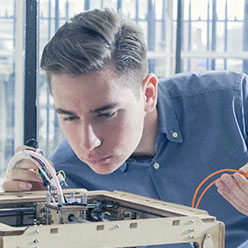 Alberto Rizzoli
Alberto Rizzoli
Business Director - Kidesign, Singularity University GSP15
Education in 2025
Alberto Rizzoli, a young Italian futurist, educational innovation entrepreneur and Singularity University student, explores how schools and learning could evolve as a result of the rapid adoption of new technologies and educational models.
When young talent joins the workforce after completing education, they often eclipse previous generations in their proficiency with technology. However, this is happening at an accelerating rate, and state education is falling behind in providing skills that are crucial for success 10 years from now. In a world where artificial intelligence organises our lives, 3D printers manufacture our goods, and cross-border collaboration is the norm, what kind of talent will employers seek? We will have a look at the technologies that will emerge in the next 10 years, and develop a strategy that equips today's primary and secondary school students with the skills required to harness them. We will take note from avant-gardist education systems such as Finland's, and discover laggard behaviours that must be modified to make way for modern alternatives. Ultimately, this essay reveals how entrepreneurs and businesses can play a leading role in advancing tomorrow’s education, and what direction they should take to successfully disrupt today’s school systems by revolutionising the industries that sustain it.
 Norman Rebin
Norman Rebin
President - Success Mentors International
The Future of International Aid and Development
Norman Rebin is a US-based specialist in productivity and communications focused on global business. He outlines the drivers for and benefits of increasing future corporate involvement and investment in international aid and development.
As economies in both the developed and developing world continue to stagger, will the humane nature of foreign policy give way to domestic expediency? Or will we, collectively, (international fund organizations, NGO's and governments) find long term solutions for the underlying problems causing poverty and conflict, and address them in creative and sustained ways? The author will focus on these questions and their potential solutions.
 Adrian Pop
Adrian Pop
Director - Centre for Regional and Global Studies; National University of Political Studies and Public Administration, Bucharest, Romania
Futures of Bretton Woods
Adrian Pop is Professor of International Relations with the National University of Political Science and Public Administration in Bucharest, Director of the Centre for Regional and Global Studies at the Romanian Scientific Society for Interdisciplinary Research, and Chair of the Romania Node of The Millennium Project.
He holds a Ph.D. in History and over 20 years of experience in interdisciplinary research and trans-institutional collaboration with experts from around the world. A former International Research Fellow with the NATO Defence College in Rome and Senior Visiting Fulbright Scholar with the University of Maryland, Adrian Pop is a member of various international professional associations including European International Studies Association (EISA), Central and East European International Studies Association (CEEISA), and World Futures Studies Federation (WFSF). He also sits in the scientific board of the Institute of the Romanian Revolution of December 1989 and the editorial boards of several scholarly journals. He has extensively published in the fields of Cold War history, history of historiography, international relations, geopolitics, and security and defence studies a series of books with a particular focus on the Black Sea region, East-Central and South-Eastern Europe, including The Origins and Typology of East European Revolutions, Moldova-Romania: Managing Migration and Combating Trafficking in Human Beings at the EU Eastern Border, Geopolitics, At the Crossroads of Interlocking Subregional Arrangements, and A Phenomenology of Romanian Historical Thinking.
The chapter suggests that the tentative process of establishing a new Bretton Woods encompasses four different, although interdependent tracks: an international monetary system based on a dollar-renminbi-euro triad or, at least, on dollar and renminbi; a right match between the emerging countries’ weight in the global economy and their power and influence in global economic governance structures; an enlargement of the ‘basket of currencies’ on which the Special Drawing Rights is based to all major economies; and a possible resumption of the gold standard. It pinpoints three scenarios as far as the evolution of the international monetary system is concerned and it suggests that the most likely in the medium term is the multipolar scenario.
 Ian Pearson
Ian Pearson
Futurologist - Futurizon
Human-Machine Convergence
Dr. Ian Pearson, a globally acclaimed futurist and inventor, takes us on a journey to the frontiers of human enhancement, examining how scientific advances could turn the body into a technology platform and blur the boundaries between man and machine.
With nanotech and new materials invented frequently, we’re seeing the first stages of using the body as an electronics platform. How far can and will this go? This chapter will explore the classes of convergence, the technological potential and applications most likely, and explore some of the ethical issues that will also arise.
 B.J. Murphy
B.J. Murphy
Curator - Forum for the Future
Biohacking, Cybernetics, and the Future of Body Modding
B.J. Murphy, a 24-year-old American Technoprogressive Transhumanist, writer, editor and social media manager for the futures magazine SeriousWonder.com, presents a powerful vision for how advances in cybernetics, 3D printing, and the biohacking movement could drive the emergence of high street Body Shops performing a range of human enhancements.
Like the business dynamic of Fast Food restaurants, whereby an increasing number of people prefer fast and affordable food over the contrary, I propose a similar business model to “plastic surgery” of the 21st century – biohacking. Soon, once the political pressure against Cyborgism is alleviated, we’ll witness the formation of local businesses that I like to call “Body Shops” throughout the US, and eventually the world. Like today’s piercing and tattoo shops, here people of the future will walk in human or enhanced in some way, and then walk out as a Cyborg.
 Benjamin Mottram
Benjamin Mottram
Kingston University
Identifying Flash-Points for Dramatic Change
The "Out of Context Problem" describes an event that has no previous frame of reference for the people involved and is therefore often a force of major change, which is often highly destructive. The sources of the event and the type of human response to them will be categorized and analysed. The sources can be considered as: Technological, Political or Environmental. The typical responses are: Violence, Business as usual, Policy change or Technological innovation. The chapter will then assert that the cause of most Out of Context Problems is instability brought about by systemic entropy or external disruptive sources and will suggest to the reader a way to identify and categorize potential threats within their auspice.
 Francisco Jose Martinez-Lopez
Francisco Jose Martinez-Lopez
Professor of Information Systems at University of Huelva
Futures Studies and the New Business Model
Professor Francisco Jose Martinez-Lopez from the University of Huelva, Spain, specialises in information technology and future studies. He explores the critical importance of future studies and long-term planning in an era of rapid change.
This chapter is written to show entrepreneurs how have changed the methodologies to perform business planning. 40 years ago budgets for one or two years were used; 20 years ago strategic plans with a view to five years were used; now we must use new planning tools as events unfold very quickly and methodologies are needed to forecast future studies. This paper will show what new methods will be needed to make business planning more effective.
 Michael Mascioni
Michael Mascioni
Writer, Consultant, Conference Planner
The Future of Ambient Interactivity in Public Places
Michael Mascioni is a market research consultant, writer, and conference planner in digital media and clean energy. He discusses how the use of ambient interactivity could play out to enhance user experiences and marketing effectiveness in public place.
This chapter will focus on the future impact and growth of ambient interactivity in such public places/leisure facilities as stores, shopping malls, airports, train stations, museums, hotels, movie theaters, and amusement parks. Ambient interactivity, in the author’s view, connotes interactive forms embedded in or built into physical structures and environments, including interactive tables, interactive windows, and kinetic interactive displays. It has become a potent force because of the more fluid, transparent, dynamic, and collaborative interactivity it affords using gesture-based technologies, augmented reality, and other immersive technologies. This chapter will examine how ambient interactivity will evolve into an even more powerful and engaging medium in marketing, design, education, and entertainment. It will discuss the increasingly significant role wearable technology, 3D building and pool projections, holography 3D printing, and other technologies will play in ambient interactivity.
 Dana Klisanin
Dana Klisanin
CEO - Evolutionary Guidance Media R&D, Inc.
Acceleration of the Slow Movement
Dana Klisanin, an award-winning US psychologist and expert on conscious living, explores how businesses in future may increasingly turn their back on the pursuit of speed and instead embrace the concepts of the Slow Movement.
In growing numbers, people will begin to recognize the toll their fast-paced lives are taking on their health and families. The slow movement will gain momentum around the world as researchers continue to reveal evidence implicating negative stress associated with multitasking and super-speed lifestyles in everything from cancer to depression and divorce. The slow movement is about changing mythic frameworks that are a response to increased awareness of our social and ecological interdependence. The slow movement is already changing the way individuals and families eat, play, learn, vacation, and much more. We will see an expansion of businesses that support the slow movement and an increasing emphasis on triple bottom line profits. Nonprofit organizations will need new creative strategies for engaging with people at the grassroots level. We will see the slow movement at the community level through increasing participation in the "Transition Towns" movement.
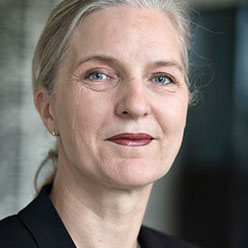 Anne Lise Kjaer
Anne Lise Kjaer
Futurist and Author - Kjaer Global
Tomorrow's Consumer Landscape Looking at People: How will we live, consume, and how do we expect companies to engage with us?
Anne Lise Kjaer, a global futurist and trend observer based in Denmark, discusses how relationships between producer and consumer could change and the implications for how organizations will need to adapt to engage with ever-more demanding consumers.
Hyper-consumption and pressure to optimise everything – including our time – means that the word “consumer” has taken on increasingly negative connotations. Genuine engagement and “enoughism” will drive tomorrow’s values. But how do we move from our current waste-based economy to a new model with the wellbeing of people and planet at the core?
 Jeffrey Joslin
Jeffrey Joslin
Writer - Me, Myself, and Robot
Can 3D Printing Destroy Capitalism and Restore Government?
Jeffrey Joslin is a writer on the advancement of technology. He argues that 3D printing could be the most disruptive innovation in history - reshaping industry value chains, enabling abundance, redistributing economic wealth and rebalancing power and influence in political systems.
Automation, artificial intelligence, and 3D printing will lead to the collapse of capitalism in the decades to come. After a tumultuous transition, humans will adapt to a more communistic economy and enjoy a functional democratic government (and no, we do NOT have a true democracy today) in which they contribute or don't contribute as they please. Classes of people still exist, but they are no longer based on income.
 Boyan Ivantchev
Boyan Ivantchev
Assoc. Prof Behavioural Finance
The Future of Money and Postmoney
Dr. Boyan Ivantchev, an associate professor in behavioural finance and board member of a Bulgarian list private equity fund, examines the evolution of the role of money, its emergence as postmoney, and the potential future scenarios for the evolution of money in an increasingly digital world.
My theory, Money as Taboo and Postmoney, assumes that functions of the money - medium of exchange, store of value, unit of account - are frozen in the past, isolated from the development of human society, and not mirroring real economical and socio-cultural interactions of money-human beings. The decoupling between physical-nominal values of money and the globalization of the world financial system led to a dematerialization of money and the usage of: electronic payments, plastic money, internet and mobile payments, E-money and virtualization of money (i.e. Second Life-Linden Dollars and Bitcoins).
Researchers in the field of sexology, psychology, and wellbeing affirm that quantity of money is not leading necessarily to more pleasure and happiness. Some findings show that money issues are directly connected with negative effects on human psyche, causing disorders such as "Money sickness syndrome". However, the myth of having money, hence happiness, is more than alive and “relation money-consciousness" is still neglected by the human sciences. It is of real importance we to be able to foresee the future development of Postmoney and human beings.
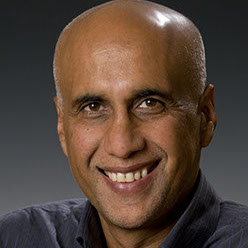 Sohail Inayatullah
Sohail Inayatullah
Professor at Tamkang University, University of the Sunshine Coast, Macquarie University, Sydney
What Works
Sohail Inayatullah is a world-renowned futurist and professor whose specialties include teaching futures, helping individuals and organizations develop their alternative and preferred futures, theorizing how the future is constructed, and developing futures methodologies.
In this essay, Inayatullah draws on 30 years of experience to explore what works in Futures Studies in organizational, institutional and national change. Seven points are made:
- Challenge the used future;
- Explore emerging issues;
- Don't wait until a crisis;
- Explore alternative futures;
- Link vision to reality;
- Include all;
- Link metaphor to strategy.
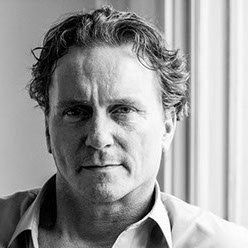 Petur Albert Haraldsson
Petur Albert Haraldsson
Founder - Fidesta
The Comeback of Value Creation as the True Measure of Results in Business
Petur Albert Haraldsson, a business executive entrepreneur and financial services change agent from Iceland, presents a compelling vision of how the economic and financial system could evolve in the digital age to enable true market driven capitalism and a reframing of the future purpose and role of banks.
The inflation of prices without the creation of real value to support it has been driven by the financial industry. This may be the fundamental cause of the serious problems Western economies, and the world, are experiencing. Therefore, the comeback of the "real economy" is a matter of survival for mankind. This will require the transfer of power from bankers to businesspeople and the implementation of a new financial system for exchanging goods and services.
 James H. Lee
James H. Lee
Founder - Strategic Foresight Investments (StratFI)
The Great Energy Controversy of 2030
James H. Lee is a Delaware-based investment advisor and authority on emerging technologies and social trends. He examines the potential opportunities and risks associated with tapping in to fields of crystallized natural gas in the form of methane hydrates trapped in our oceans below the Arctic permafrost.
The "big story" on the media right now is that with the breakthroughs in hydraulic fracturing (fracking), America is rapidly moving toward energy independence. We've defied Hubbert's Peak, as domestic oil production is now getting very close to levels that we haven't seen since the 1970's. However, if you venture beneath the surface, there is an even more abundant form of energy that we haven't even tapped yet. Methane hydrates will be a source of considerable energy and controversy in the coming years.
 Laura Goodrich
Laura Goodrich
Co-Founder - On Impact
Being Agile - The Only Way to a Positive Future in the Age of Exponential EVERYTHING!
Laura Goodrich is a speaker, coach, and advisor and Global Workforce Innovator focused on change and the future of work. She describes the fundmaentals of business agility as a management methodology to ensure organizations have the capacity to respond rapidly and effectivly to emerging and anticipated change.
The promise of the Being Agile chapter is to help individuals and executives of organizations gain insights that they can use to transform themselves and the organizations they lead to Being Agile during times of disruptive and dynamic change, and take action to respond in new ways of creating fresh solutions and innovations. "As the drivers of change collide, they will produce change so significant that much of the management intuition that has served us in the past will become irrelevant.” Trouble is, industrial age answers are at the "tip of the tongue". The Being Agile chapter will provide tools that will enable individuals to create new reactions and innovations and, in many cases, it will enable people and organizations to find a new way on a new road, before it's too late.
 Joyce Gioia
Joyce Gioia
President & CEO - The Herman Group
Experience Rules: How Stakeholder Experiences will Drive Profit into the Future
Joyce Gioia is President and CEO of The Herman Group (USA) and a Strategic Business Futurist advising global clients on workforce and workplace trends. She highlights how maximizing the experience of each stakeholder group could be the most critical driver of future corporate profitability.
As we move into the future, organizations of all types and sizes will realize that it is their stakeholder experiences that will drive engagement, success, and profit. Enlightened organizations will respond by creating a position of CExO, whose responsibility will be to optimize experiences for employees, customers, investors, and even vendors.
 Martin Dinov
Martin Dinov
Computational and Experimental Neuroscience PhD Researcher
The Near Future Consequences of Linked Neural Recording and Stimulation Technologies
Martin Dinov is an Imperial College Researcher specialising in the study of human attention and the drivers of reaction time. Together with Andrew Vladimirov, he will introduce the latest insights in stimulation technologies.
The emergence of commercial neurostimulation and neurorecording devices are harbingers of a more widespread application of technology and science to the direct betterment of our own health, abilities, mood, senses and other attributes. However, perhaps most importantly, the most drastic effects will be seen when a critical mass of adoption of these technologies occurs and various facets of society are transformed by them and by the interlinking and cascade effects of the involved technologies. Here we focus on discussing likely outcomes of neuro-networks, or "networked brains". This refers to interlinking individuals' brain states creating collective neurofeedback loops and, eventually, constructing a physical "noosphere". We explore likely impacts of such developments on areas as diverse as online and offline interpersonal communications, learning and education, preventive medicine and counseling, neuromarketing, augmented virtual reality, entertainment and gaming.
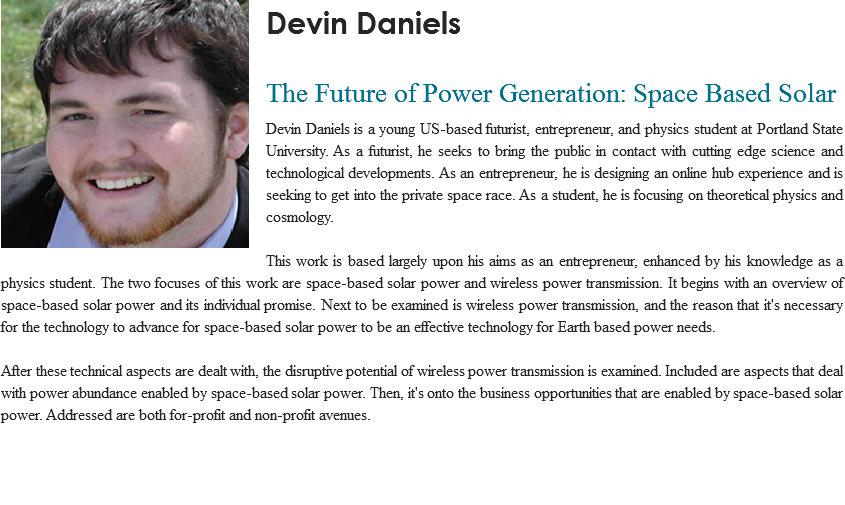
 Cornelia Daheim
Cornelia Daheim
Director - Future Impacts
Emerging practices: Towards Experiential, Networked, and Open Foresight
Cornelia Daheim, a leading German futurist and foresight consultant, highlights a growing trend towards the use of IT-based, participative and experiential approaches to invigorate and enhance the practice of corporate foresight.
New forms of practice are emerging in foresight – from IT-based and automated scanning to open foresight projects, including a wide and large group of participants and their insights to those that create future artifacts. While some aspects of these approaches are driven by technology, many stem from the insight that we need to create insights about the future differently – more openly, more appealing to being able to experience potential futures – in order to create an impact on today’s decisions. The article delivers an overview of these approaches, giving examples of such projects, and reflects on how they can be incorporated into corporate foresight practice, and which kinds of new demands this implies for those working with foresight in a corporate context.
 Maree Conway
Maree Conway
Strategic Research Practitioner and Researcher - Thinking Futures
Foresight Infused Strategy - Using Foresight to Create Generative Thinking
Maree Conway is an experienced foresight and strategy consultant, and the founder of Thinking Futures (Australia). She explores how to infuse foresight into existing corporate strategy processes to strengthen outcomes and execution.
There is one major issue that emerges from the use of conventional planning approaches: that nothing much changes even though a lot of time, energy and resources have been expended on writing the plan. This change failure has been attributed mainly to unsatisfactory execution or misalignment of action across the organisation or because the strategy was too internally focused. The primary cause of change failure, however, is the inability of people in the organisation to shift their thinking beyond today, to think about the future in new ways. This chapter explores how to move beyond today's conventional strategy processes and infuse foresight into strategy development. The use of foresight approaches enable people to move beyond today's unquestioned assumptions about change to develop more expansive and deeper ways of thinking about the future of their organisations. Even the most sophisticated strategy processes will fail unless they integrate both internal and external change and both internal (individual) an external (organisational) ways of interpreting that change.
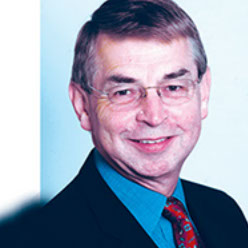 Peter Cochrane
Peter Cochrane
Professor - Cochrane Associates Ltd/University of Hertfordshire
From Clouds to Networks Without Infrastructure
Although it is fashionable to talk about The Internet of Things (IoT) and The Cloud (singular), we are actually migrating towards Clouds of Things (CoT - plural). To date, our best projections suggest that these will have to support somewhere between 50 and 250Bn manufactured, grown and produced items. But such a vision is not sustainable with current fixed and mobile technologies and internet thinking. We need a wider speciation including thousands of private, commercial, company, institutional and government clouds that are fixed, mobile, permanent, transient, open, private, secure, visible and invisible. And does everything actually need to be on line and continuously connected? No! And this leads to Networks Without Infrastructure that will carry more traffic than the internet and connected Clouds.
The core network argument centres around supplying humanity with sufficient whilst reducing energy and material consumption. Industry, farming, production and supply in general are moving to new processes and techniques demanding less material and energy with Reuse, Repurposing and Recycling (R3) taking on a whole new meaning. So, does my toothbrush, or my car need to be online 100% of the time? The answer has to be no, and their networking need not be global!
 Puruesh Chaudhary
Puruesh Chaudhary
Founder & President - AGAHI
The Future of Journalism
Puruesh Chaudhary is a development and strategic communications professional, and the Founder and President of AGAHI, an NGO focused on creating knowledge collaboration and information sharing platforms. She discusses how the practice of journalism needs to evolve in the face of continuous global change and rapid technological advancements.
Technology and innovation play a fundamental role in how journalism will be practiced in the future. I want to focus on how these drivers vis-a-vis their contribution towards building value structures that will shape credibility.
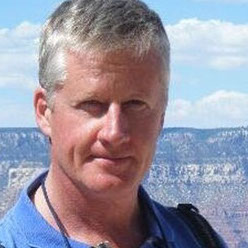 Calum Chace
Calum Chace
Owner - Three Cs
Artificial Intelligence in Business
Calum Chace, a highly acclaimed author, international authority on artificial intelligence(AI) and experienced business executive, explores the potential benefits and risks of AI and so called "conscious machines" to business and society.
Will AI eat the world? The largest and fastest-growing companies in the world are driven by artificial intelligence (AI). It is their application of better and better AI which powers their success, and they are spending huge amounts in an AI arms race with each other. AI enables them to enter and disrupt more and more industries, and every business needs to be thinking about when it is their turn.
 Andrew Charlton
Andrew Charlton
Managing Director - Aviation Advocacy
The Future for the Air Traffic Management Industry
Andrew Charlton, a highly respected Geneva-based aviation industry consultant and commentator, presents the case for reform of the aviation sector ecosystem to address the critical capacity constraints that could hold back global trade, employment and economic growth.
We currently control aircraft like it is 1955. That will change and the implications for the entire aviation industry will be huge. There will need to be a lot of change to bring ATM into the future, and much will come from outside.
Aviation is a fundamental part of modern life and a key enabler of economic growth. However, it has been very slow to modernise and to change. The pressures to do so are now growing. New markets, new players, new technologies and new expectations are coming face-to-face with infrastructure limitations and regulatory inertia. How will this play out? What are the pressures that will force the change, and what are the implications? For some parts of the industry - state-owned monopoly service providers - the change may be fundamental. The winners are likely to be the airlines most able to cope with the changes as they arise. But they will have to also navigate the current international regulatory framework, or agitate for change to it – an uncertain undertaking. The growth in air transport will also see huge pressure on safety systems. Nothing matters more to their customers. The industry will need to find ways to balance all of these issues.
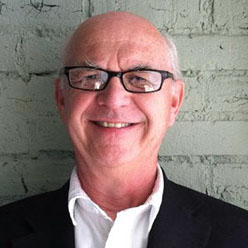 Jim Burke
Jim Burke
Manager & Foresight Coach, Forecasting and Innovation Solutions - TASC
Future of Design Thinking's Role in Foresight
Jim Burke, a US foresight coach focused on delivering innovation and effective ways to think about and act on the future, highlights the growing use of Design Thinking as part of the foresight process - particularly for prototyping future scenarios.
Design Thinking, recognized as valuable for creating product and services, also can play an important role in helping clients think about the future. This chapter will help readers understand and integrate basics of Design Thinking with basic steps of futures exploration to develop more creative scenarios, forecasts and implications. The chapter will focus on ways to better identify client needs for futures and forecasting, conduct empathetic interviews, and understand abductive thinking, all as a foundation to create “prototypes of the future” (e.g. scenarios created using Design Thinking activities); testing the “prototypes” and identifying implications. Integrating Design Thinking offers creative ways to understand client and personal needs for futures, develop more innovative and stimulating constraints, and craft more innovative foresight artifacts in lower-risk ways, as well as offering ways to better understand implications.
 Dean Bubley
Dean Bubley
Director - Disruptive Analysis
The Future of the Phone Call
Dean Bubley, a UK-based technology analyst and authority on the future of telecommunications, explores the potential evolution of the humble phone call and considers the implications of ever-more fragmented – but more functional and customized – forms of telecommunication.
Telephony has been with us for over 100 years. Person A calls Person B for X minutes. Billions of people around the world use the phone every day, for a wide variety of personal and business reasons. But that strength is also its limitation - it is a generic, undifferentiated service, in a world where everyone now has many options for communications. We already see some fragmentation - use of apps like Skype and Viber, website-embedded voice and video services, chat functions embedded in games and so on.
But the Future of the Phone Call is evolving even further - we are seeing numerous tools to help communications fit better "into context", and help people achieve their real, underlying purposes and situation. Speaking to your bank manager should be different to calling from a beach to say "wish you were here". Your boss should be able to interrupt you - but not a telemarketer. Maybe we want realtime translation - or even emotional analysis? We send our caller ID, but not *why* we are calling. All of these will change.�?�?�? The chapter will cover the opportunities, timelines, business benefits, social implications and underlying technologies.
 Paul Brooks
Paul Brooks
Owner at Matrika
Be There Now
Paul Brooks, a Hawai'i-based researcher on social and economic emergence, stresses the importance of openness, dynamism and scalability in helping a business prepare for the future.
To understand a "living economy", we can understand it's properties. For the sake of simplicity, let us take three basic properties of living systems that function as separate, albeit intrinsically interconnected. All living systems are Open, which means that they can receive an income, and produce what to them is a waste product. All living systems are Dynamic, which means that they are constantly moving as in a heart beating. Finally, they are Scalable, which allows them to grow (or shrink like a puffer fish).
If we wish to have living business models and living economies, where are our current models displaying incoherence with these fundamental properties for sustaining livelihood? Examples:
Open: Are we capable of receiving and sharing feedback from customers, clients, or B2B?
Dynamic: Are we prepared to meet the needs of emerging paradigms and adapt to the future?
Scalable: What barriers do we have that prevent us from becoming a global enterprise over night?
This device of properties arose from meditations on the similarities between the biosphere, humans, humanity, and the internet all of which display them. The living systems metaphors are endless, and those insights gleaned through them are as nourishing to intellect and the soul.
 Anne Boysen
Anne Boysen
Strategic Foresight M.S. - After the Millennials
Generational Changes
Anne Boysen, a Norwegian futurist and researcher specialising in generational analysis, explores the evolving nature, expectations and workplace implications of those born after 1995 - often referred to as Generation Z.
Generational differences are often studied in foresight to help anticipate social change. Unfortunately, much of the analytical material we rely on is a medley of single data points and surveys, often designed, collected and analyzed by for-profit companies. This affects the quality of our scenarios and forecasts. I propose a method to be used in foresight to quality proof our data so we can make correct assumptions about generations.
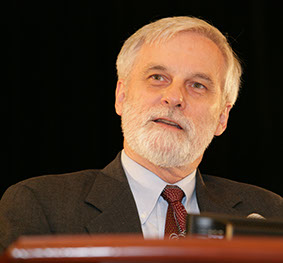 Peter Bishop
Peter Bishop
Executive Director - Teach the Future
Critical Foresight Skills
Dr. Peter Bishop was Director of the Foresight program at the University of Houston and is now the Executive Director of Teach the Future, which helps educators teach foresight. He highlights the nature of the key foresight skills required by organizations and how they can be acquired.
 Matt Alder
Matt Alder
Chief Strategist - Metashift
The Future of Work, Talent, and Recruitment
Matt Alder is a digital strategy expert who focuses on the future of work. He examines the critical forces of business change, and how they are shaping tomorrow's organization designs and models of work and employment.
The article will look at the effects of the changing world of work on companies, and how they will attract talent to their businesses in a world where remote working opens up new possibilities in terms of work patterns and skills markets such as Odesk and Elance, and work distribution platforms such as Uber and Taskrabbit are the new norm. What will working for a company even mean in 10 years time, and how will businesses adapt their mindsets to succeed?
 Stephen Aguilar-Millan
Stephen Aguilar-Millan
Director of Research - The European Futures Observatory
Accelerating Change, Pace of Technology, Innovation
Stephen Aguilar-Millan is the Director of Research for The European Futures Observatory, which specializes in financial futures, strategic futures, and the future of the global economy.
One of the mantras of the current age is that we are living at a point in time when the pace of change is accelerating faster and faster each year. We all accept that view as a given, but we can ask if it really stands up to closer scrutiny.
This article consists of three elements:
1. Why we feel that the pace of change might be accelerating.
2. Why it might not be.
3. How might this affect business? (I'll give you a hint here, it's all about investment horizons)
At the moment, the balance of the piece lies equally across the three elements. If you were to accept the article, then I would want to amend that balance so that the first two elements occupy a quarter each and the final element would occupy the final half of the piece.
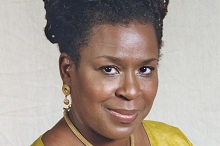 Claire A. Nelson
Claire A. Nelson
Ideation Leader - The Futures Forum
Improving the Outcomes of Foresight Projects
Dr. Claire Nelson, Ideation Leader of The Futures Forum USA and White House Champion of Change, explains the critical role of scenario planning and storytelling in helping organisations shape and share their desired visions of the future and deliver the resulting organizational changes.
The rapid rate of change is making futures sensing and analysis an even more needed skill for business leaders. Foresight is needed to improve their adaptability and resilience to internally driven or externally demanded change. The strategic foresight process allows strategic planners to see the future alternatives more clearly, and make better decisions and plans. But after that comes the actual task of steering an organization in the direction of the preferred future. This often remains a challenge, especially when the change requires not just an incremental tinkering around the edge, but a transformational shift.
Dr. Claire Nelson, Futurist and Sustainability Engineer, will examine how the lessons learned from the story telling in business community converge with the recent research on story telling in foresight, and explore how "storifying" the outputs and outcomes of foresight studies can help leaders and their teams envision and participate more enthusiastically in the change processes required. This approach can also be used for resilience analysis projects to shape better outcomes.
 Anish Mohammed
Anish Mohammed
The Technological Singularity
Anish Mohammed, a UK-based technologist and security expert, explores the notion of the technological singularity and examines the potential challenges it could create for humanity.
 Steve Wells
Steve Wells
Project Manager - Fast Future Publishing
Coming Soon
Steve is an experienced Strategist, Futures Analyst and Partnership Working Practitioner. His current roles include Project Manager and Co-editor on The Future of Business - the first book in the FutureScapes series from Fast Future Publishing.
As an Independent Consultant he has conducted research and analysis into emerging technologies for a range of client organisations, and conducted scenario development and futures analysis for the UK affiliates of a number of global pharmaceutical companies. He has researched and reported on the pharmaceutical industry / NHS partnership working landscape; conducted competitive analysis of partnership working practice of major pharmaceutical companies in the UK; and led a collaborative futures project on the aging population in Northern Ireland, Scotland, and Wales for the Future Analysts' Network, a network of public and private sector futures practitioners formerly facilitated by the Department for Business, Innovation and Skills. Steve's previous staff role experience includes leading the strategic planning process for Pfizer Ltd in the UK; development of a collaborative approach to trend and driver analysis; and leading the development of UK healthcare system scenarios to support strategy development.
 April Koury
April Koury
Foresight Researcher - Fast Future Research
Global Drivers of Change
April Koury, a Houston-based futurist, is a graudate of the University of Houston's Foresight program and currently works as a research assistant at Fast Future Research and a project assistant with Fast Future Publishing.
April and Rohit Talwar introduce over 100 global drivers of change that shape organizations today and will continue to impact the future of business.
The drivers fall into seven broad categories:
Tomorrow's global order - How might power balances shift?
Emerging societal landscape - Who are we becoming, how will we live?
New economic and political architecture - How might economic and political systems evolve?
Social technologies - How will tomorrow's technologies permeate our everyday lives?
Future of business - What are the critical success factors for organizations in a rapidly changing world?
Disruptive technology - How might new technologies enable business innovation?
Energy environment and resources - How can we protect and power the planet?
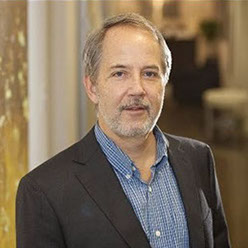 Michael Nuschke
Michael Nuschke
President - Nuschke Financial Planning
The Future of Personal Income and Expenses - How Technological Advances Will Impact Your Wallet
Michael Nuschke is a "Retirement Futurist" who focusing on the impacts of emerging technologies on personal financial planning. He discusses the potentially dramatic future impacts of rising life expectancy and accelerating technologies on personal finances.
Technological advances will impact our personal finances in very significant ways. In both personal expenses and personal income sources, dramatic impacts will unfold. This chapter explores how technological advances could impact our finances very probably over the next 10 years, and a more speculative look at beyond that. The chapter will explore likely changes to:
- Incomes: Pensions, investments, business, employment, and
- Expenses: Housing, food, transportation, entertainment, retirement savings, health, services.
 Elias Rut
Elias Rut
Software Engineer, Vienna University of Technology
Future Developments and Opportunities for Deep Learning Artificial Neural Networks
Elias Rut, a freelance software engineer and student of computational intelligence at the Vienna University of Technology, and Martin Dinov, an Imperial College PhD researcher in neuroscience, introduce us to the power of deep learning Artificial Neural Networks.
Deep Learning is a state-of-the-art machine learning concept that one may have read about in the news lately, perhaps in the context of Google’s acquisition of the artificial intelligence startup DeepMind. Though the technicalities of deep learning can be complex and mathematical, many of its possibilities and implications need not be so. We will explore some of these by focusing on 4 examples that are highly relevant today: 1) as part of the quest to try to replicate and understand how the human brain does things 2) as part of so-called classification systems that can learn to distinguish between thousands of different categories, as used in image and speech recognition software 3) as part of general scientific and financial modeling that help to understand complex functions, systems and situations that are not comprehensible to a human and, 4) as part of current and future elaborate AI systems like IBM’s Watson that are capable of a multitude of intelligent behaviors. We will conclude with a look at how deep learning-type methods and the possibilities they bring might change and shape some near-future scenarios in everyday life and in global socio-cultural interactions.
 Amir Bar
Amir Bar
Learning Product Developer
Social Technologies - How Will Tomorrow's Technologies Permeate Our Everyday Lives?
Amir Bar is an instructional designer and a learning product developer focused on mobile learning development and how people learn through mobile devices. Amir has created more than 20 mobile assignments for professors from different departments at the University of Houston.
Together with Alexandra Whittington, he presents four scenarios exploring how mobile technology could permeate every aspect of our social and professional lives by 2030.
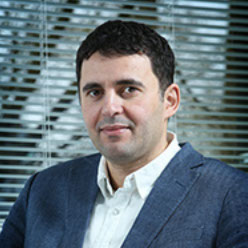 Omar Mohout
Omar Mohout
Professor of Entrepreneurship at Antwerp Management School
Making the Shift from Disruptive to Hyper Scalable
Omar Mohout, a former technology entrepreneur, is a widely published technology author, C-level advisor to high growth startups as well as Fortune 500 companies and Professor of Entrepreneurship.
He is author of 'Pricing Strategies for Startups' and the popular 'Startup Master Class series'. Mohout is a columnist; Co-chair of the Circle Of Growth, Organizer of the Growth Hacking Meetup, Co-founder of the #BeTech Community and Member of the Board of Directors at Startups.be. He is also a mentor at Founder Institute and Belgium Ambassador at World Startup Report.
Companies that are pondering how to be disruptive or how to be innovative are asking the wrong question.
The same goes for companies that desperately want to put a “digital strategy” in place. Not only is “What should my digital strategy be?” the wrong question, it makes them focusing on the wrong things:
- How to digitize processes and data;
- The ever changing technology.
The real question is how to be Hyper Scalable. The answer will inevitably lead to disruption, innovation and a “digital” strategy.
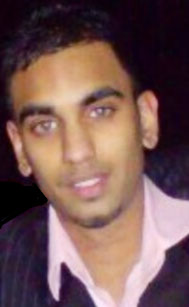 Rishi Haldanya
Rishi Haldanya
Professor of Entrepreneurship at Antwerp Management School
Making the Shift from Disruptive to Hyper Scalable
Rishi Haldanya as a Student conducted academic studies on the role of Consciousness through the lenses of Neuroscience and Psychology with further exploration through Spirituality and Yoga. He has considered the impact of harnessing Consciousness on personal development now and the potential impact in the future.
"In his chapter he highlights how working with human consciousness could enhance workplace performance and create opportunities across a growing number of sectors.
<
>
x




